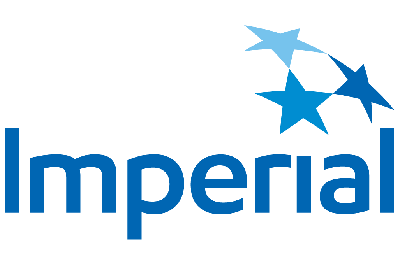
I. Overview
In the ever-evolving world of Canadian mining, Slave Lake Zinc Corp (CSE: SLZ) stands out for its ambitious and strategic approach to mineral exploration since its incorporation in 2016. Based in North Vancouver, the company focuses on the exploration of zinc, lead, copper, and silver deposits. Their primary venture, the O’Connor Lake project in the South Slave region of the Northwest Territories, reflects a promising pathway for both industry innovation, sustainable practices, and future growth.
II. O’Connor Lake Project
A. Historical Context
The O’Connor Lake deposit is a legacy asset initially developed after the Second World War and subsequently abandoned in 1952 when the prices of zinc and lead collapsed post war. Slave Lake Zinc’s vision is to breathe new life into this once thriving project by utilizing modern exploration techniques combined with a focus on sustainability.
B. Strategic Moves and Land Acquisition
Having secured an additional 18,841 acres surrounding the original lease, the company now boasts contiguous land spanning more than 7000 hectares. This large holding provides extensive opportunities for exploration and development. By utilizing state-of-the-art technologies such as localized high-resolution ground geophysics and a recently completed 900-line km airborne surveys, the company has discovered new mineralization zones. Particularly, SLZ has made the discovery of new mineralization 5km away from their existing deposit.
From the original lease Slave Lake Zinc holds a Type A Land Use Permit and a Type B Water License. Additionally, SLZ can have a camp of up to 49 people and 3 drill operations. This is a huge asset for SLZ as these permits can be difficult to receive. This can further aid in streamlining future applications for additional permits in the area.
The O’Connor Lake project is also favorably positioned with access to a strong infrastructure. Notable aspects of the surrounding area include:
- Proximity to power with only 60 km (about 37.28 mi) to a hydro power plant.
- Railway access at the town of Hay River.
- Positioned 185 km (about 114.95 mi) by air from the Yellowknife (capital city of Canada’s Northwest Territories).
- Access to Pine Point infrastructure via the all-weather road between Hay River and Fort Resolution.
- 60 km (about 37.28 mi) to all weather road at Fort Resolution
Being situated near pre-existing infrastructure is significant for a mining company, as it reduces logistical challenges and costs. Proximity to established roads, power, and communities can ensure smooth operations, enhance efficiency, and further minimize the environmental impact of building new infrastructure from scratch.
III. ESG Principles Beyond Compliance
A. Ethical Framework
A key aspect to the mining industry that is often overlooked is its environmental impact. Neglecting proper compliance can cause a plethora of operational constraints. For a mining company to succeed its integral to focus on Environmental, Social, and Governance, or ESG. For Slave Lake Zinc, they are not only compliant with ESG principles, but use them as the foundation of their operation. Slave Lake identifies several core areas for its ESG focus:
- Indigenous and Local Community Respect: Engaging and respecting the rights and traditions of Indigenous peoples.
- Land and Resource Management: Ensuring responsible land access and utilization throughout its processes.
- Waste Management: Emphasis on safe handling and disposal of waste and hazardous materials.
- Local Economic Support: Promoting regional economic development through responsible practices.
- Transparency and Ethics: Enhancing business integrity through transparent and ethical conduct.
These principles help to guide decisions made by SLZ, ensuring long-term sustainability and ethical long-term growth.
B. Collaboration with Surrounding Communities
To further ensure its ESG goals are being met, an integral part of Slave Lake Zinc’s operations is the Collaboration Agreement with the Northwest Territory Métis Nation. This agreement facilitates mutual benefits, emphasizing economic advancement, employment opportunities, and educational and training initiatives for the Indigenous community. The agreement offers a priority system where members of the Northwest Territory Métis Nation have the first opportunity to access employment, education, and training opportunities. After that, if there are any remaining opportunities, they would be offered to the people of the South Slave. This policy aims to prioritize the advancement of these two groups before considering other individuals or communities.
IV. Lithium Potential
Despite being a historic zinc-lead +/- copper property, there is also a potential opportunity for Lithium as well. The growing demand for lithium, a vital component in batteries for electric vehicles and renewable energy storage, has surged due to the global shift towards cleaner technologies. As lithium is prioritized across the world, such a discovery could be a huge asset for SLZ.
Notably, the host rocks in the O’Connor Lake area bear a resemblance to the Hearne Channel-Beaulieu River area, where lithium pegmatites are currently being evaluated. The company’s Summer Lithium Exploration Program aims to expand their Critical Metals Project by assessing the potential of the pegmatites for lithium reserves and well-documented coarse base-metal (Zn-Pb+/- Cu) vein systems. Key features and strategy for Lithium include:
- Coarse-Grained Pegmatites: Discovery of pegmatites resembling those found in lithium-rich regions, offering high potential for lithium reserves.
- In-Depth Exploration: Designing extensive evaluation strategies, involving ground geophysics, geological mapping, sampling, and drilling, to comprehensively assess potential lithium reserves.
- Historical Perspective: Leveraging historical insights from logs dating back to 1951, offers a look into the potential mineralization of this area.
V. Slave Lake Zinc as a Long-Term Investment Prospect
Slave Lake Zinc Corp. offers a mix of rich history, innovation, ethical governance, and a forward-looking approach to mining. Their commitment to ESG principles, land acquisition, and the revitalization of a historic deposit makes them an attractive proposition with many upsides.
The collaborative spirit with the Indigenous community and the exciting possibility of unlocking new mineral horizons further positions Slave Lake Zinc as a potential frontrunner in Canadian mineral exploration. With these multifaceted endeavours, Slave Lake Zinc aligns itself as an investment destination, not just for the present but for a sustainable future as well. Investing in Slave Lake Zinc is investing in a legacy that could promise a rewarding journey for stakeholders and shareholders alike.




